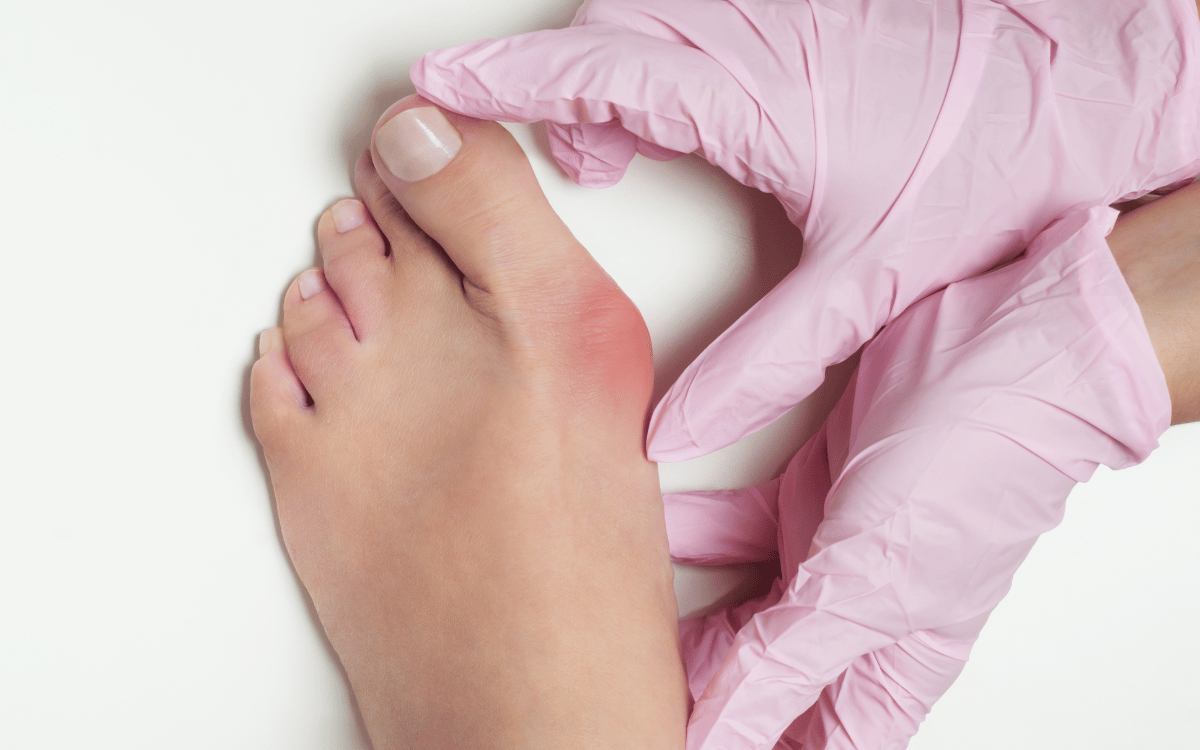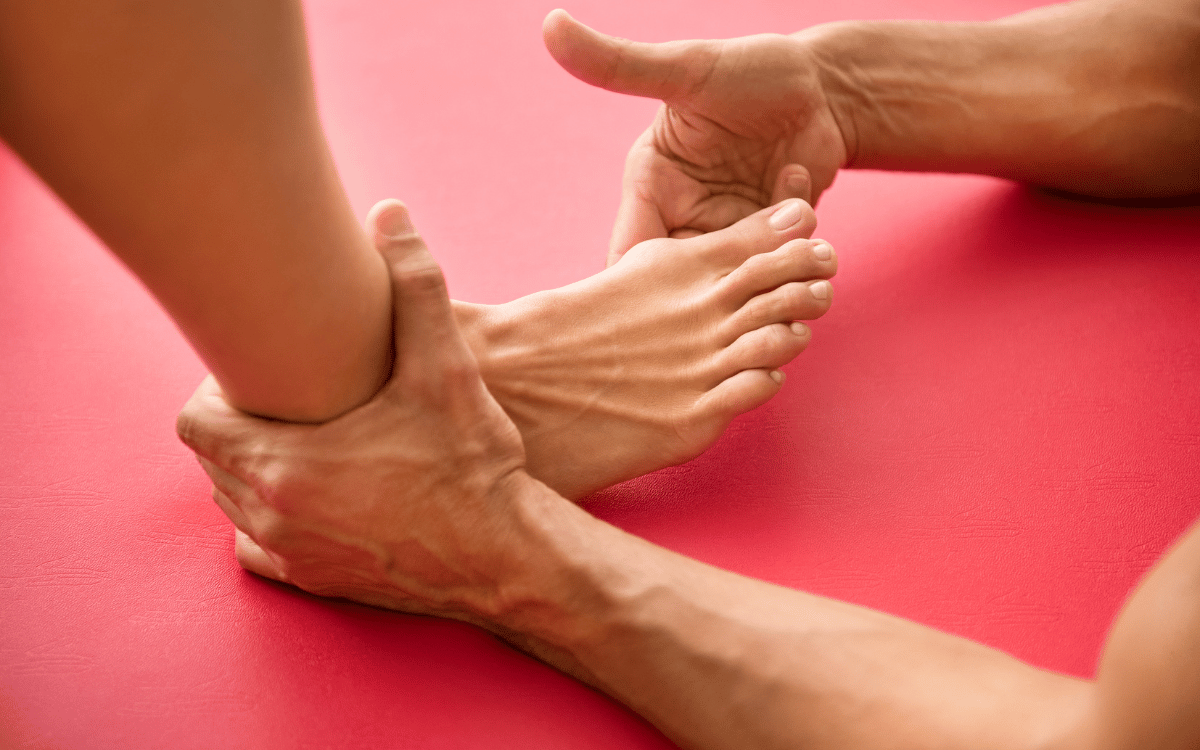Bunions are a painful and debilitating foot disorder that can be caused by many factors. There is no single cause of bunions, but there are three main contributors: family history, tight shoes, and misalignment in the feet such as high arches or rolling. The first step to treating bunions is identifying what has led to them and resolving those factors.
Family Genetics – What’s Your Risk?
There is no doubt that there is a link between bunions and hereditary factors (genetics). Hereditary factors are biological characteristics that are passed down via genetics from our parents. These traits often relate to misalignment of joints of the feet and legs. This can affect the way the muscles pull on the big toes as you stand or walk, contributing to bunions forming. If you improve the alignment of the feet and legs and strengthen the relevant muscles around the big toe joint, you can actively treat and improve the bunion. This is especially true when treatment is sought early.
So, have a look at your mum’s, dad’s and/or grandparents’ feet. If they have a bunion, then you probably have an increased risk of getting one. Having your feet assessed before a bunion starts could go a long way to avoiding bunions altogether. Bunions are often hereditary, so if your parents or grandparents had bunions, you are at a higher risk of developing them as well. If you have any family history of foot problems, it is important to be proactive in your treatment and prevention methods.
Tight Shoes – The Bane of Bunions
Tight shoes are one of the most common causes of accelerating bunions. Wearing shoes that are too tight puts pressure on the toes and forces them into an unnatural position. This can cause the joint at the base of the toe to become swollen and misaligned, leading to the development of a bunion.
Doesn’t mean you need to throw away the heels!
An interesting study out of the up found that runners that are too tight can cause more pressure and pain and accelerate a bunion better than wearing a heel. So, remember when it comes to runners bigger is better particularly around the toe box.
When you do wear heels just get them stretched by a bootmaker particularly around the big toe this will help reduce pressure. I’m not suggesting heel are good for your feet, but most people don’t wear them enough to be a huge factor.
Foot Misalignment – A Leading Cause of Bunions
Numerous studies have linked foot misalignment to the formation of bunions. Your feet are a complex system and when one part is out of alignment, it can affect other parts in your body too. If you have high arches or if your big toe joint rolls backwards (this means that instead of straightening down at the end like most toes do, it bends upwards), then this puts extra pressure on bunion-prone areas. This causes inflammation which leads to soft tissue changes such as swelling and pain with movement
The link between Foot Misalignments and bunions has been proven by scientific studies. Improving the alignment of your feet and strengthening muscles around big toe joint can contribute to reducing bunion pain and discomfort.
Bunions are a foot problem, but they don’t just affect the toes – other parts of the body can be affected too. If you have high arches or if your big toe joint rolls backwards (this means that instead of straightening down at the end like most toes do, it bends upwards), then this puts extra pressure on bunion-prone areas such as underneath your first metatarsal bone by pushing against it from above with one side higher than another. This causes inflammation which leads to soft tissue changes such as swelling and pain with movement.
Okay so now we have covered the causes of bunions let’s look at some quick treatment tips.
Preventative Exercises
There are a host of simple exercise that you can do to prevent bunion development and maintain the health and vitality of your feet. Exercising the muscles and joints in your feet can stimulate the production of synovial fluid, which is a natural oil for the joint; help maintain and improve joint mobility and range of motion; and increase the strength and stability of your feet.
The Big Toe Exercise:
This exercise targets the big toe joint and helps to improve its range of motion.
- Cross your left ankle over your right knee (opposite for your right foot).
- Use your left hand to stabilise your foot.
- With a flat palm, slide your right hand between your first and second toes, gripping your big toe.
- Move your big toe in a clockwise direction 10 times, and then in an anticlockwise direction 10 times, morning and night.
PRO TIP: Ensure that you are moving your toe at the base, not at the top joints. Grinding noises in the joint are fine, unless it is painful. If this is the case, stop the exercise immediately and consult your practitioner.
The Bunion Straightening Exercise:
This exercise will strengthen the muscle that moves your big toe from side to side. This will assist in slowing the progress of a bunion deformity and help with the realignment of the big toe.
- Sit on the edge of a chair with your feet on the ground.
- Relax your feet and legs.
- Move your big toe away from your other toes with your hand, keeping the muscles relaxed.
- Keep the toe in this position by tensing the muscles and pushing the inside and outside edge of your toe/foot into the floor.
PRO TIPS: There may not be much movement of the big toe in relation to the second toe (only a few millimetres). The muscles need to be relaxed until the big toe is in position. You can use something to put the big toe in position if you can’t reach it, such as a ruler or wooden spoon.
Non-Surgical Treatment Options
The main goal of treatment is to reduce pain, improve function and reduce the progression of the bunion deformity. Early treatment increases the likelihood of success. Conservative treatment can involve foot mobilisation therapy, corrective exercises and orthotic therapy. Unlike orthotic therapy, foot mobilisation therapy is performed to stimulate the body’s ability to repair and restore itself. Working on the joints helps to reduce pain and inflammation, and restores foot mobility, function and posture. This is combined with corrective exercise to promote joint stabilisation, muscle strength and stretching. These two treatment types — foot mobilisation therapy and corrective exercises — work together to improve your results.
Here is a case example of what is possible:
This picture is measuring the bunion from the article that is 28 degrees. A straight toe with no bunion is 15 degrees.
The study was conducted with the patient receiving foot mobilisation regularly over a 12-week period.
This is the aftereffects where the bunion has changed from 28 degrees and is now down to 16 degrees. And the great thing is we would expect the toe to straighten further down to 15 degrees.
Please see the details of the research article below. We’ve used the before and after pictures from a published study, so you know this is legitimate. We have countless examples just like this one was we’ve followed exactly the same treatment and got a great result thousands of times. (Yes, we see a lot of bunions)
JEDYNAK, T. 2009. Treating hallux abductor valgus conservatively through foot mobilisation techniques and exercise therapy. A case studies. Podiatry Now, October 12-15.
What to do to avoid bunion surgery:
- Book an assessment
- Allow us to assess your bunion and diagnose its underlying cause.
- We will devise a plan to treat your bunion.
- Work with us to carry out the plan together and help you avoid bunion surgery
If you would like to avoid surgery for your bunions, we’re offering a 65% off initial assessment to anyone with a bunion. To make a booking call on 8966 9300 for Manly Vale or just email us at [email protected].



